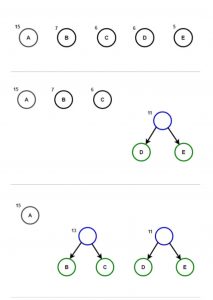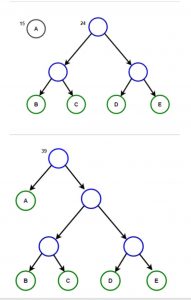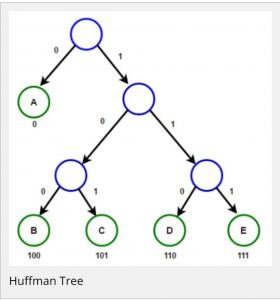Have you ever thought how internet enables faster data transfer? How to store large data in small storage devices? How compressed data can be read/written faster than original data?
Yes, you are right we are discussing about data compression. Without the innovations in the field of data compression, there would have been no possibility of us to enjoying all these amenities of the digital age. Today, while the uncompressed data may require 25 megabytes or more to be stored, data compression is needed to store and transmit it over communicating networks. With the popularity of mobile internet being used during traffic, the application of mobile Internet operating mode and the growing number of operating vehicles have resulted in a large amount of data in the actual operation. Although the hardware has made great progress, one of the most important problems is that it still needs a lot of data speed of mobile Internet applications. Although the communication cost has been greatly reduced, it can not only meet the actual operation requirements of the application units but also save wireless data transmission costs, which is still a key problem to be solved in the current industry. Text information transmission after compression is key to solving this problem. Within few microseconds your message would have been delivered to your bestie.
What if no Data Compression?

Nowadays, where we run out of space in our phone of 68gb memory even after data compression. What if uncompressed data would have stored exactly as it was recorded? This would impose bit by bit duplication. Uncompressed data may offer maximum data fidelity at the cost of maximum storage and bandwidth requirements. Then prices of your USB flash drives, SD card, etc would have increased dramatically. Well hold on, now your pockets are safe! Like an unseen force of tremendous power in the modern world, this technology makes our lives easier and smoother with the help of data compression algorithms like lossy and lossless compression. Moreover, this method can be accepted because it can meet the data transmission delay and data quality formulated by user in a complex urban communication environment.
Lets have a look at Lossless Compression Algorithms: As name suggests there is no loss of data, not even a single bit. Its very efficient method of compressing data applied for images and texts. There are several lossless methods like Huffman, RLE, etc
-
- Huffman Coding – assigns codes to characters such that length of the code depends on the relative frequency weight of corresponding character. Consider some text consisting of only ‘A’ ,’B’, ‘C’, ‘D’ and ‘E’ character and their frequencies are 15,7,6,6,5 respectively. Following figures illustrates algorithm of Huffman tree. From Huffman tree we can code A as 0, B as 100 and so on. Encoding and decoding is made easier with this algorithm. This shrinks the size of text that contains repeated segments



- RLE compression algorithm: Run Length Encoding (RLE) replaces repeated data(runs) with frequency/data pairs Ex: Data- WWWWWEEEETTTT Encoded data- 5W4E4T
Some image formats such as GIF, PNG and BMP are optimized by lossless techniques.
- LZW compression: It assigns fixed length code words to variable length sequence of input symbols. Coding is based on a dictionary containing the source of symbols to be encoded. The coding starts with an initial dictionary, which is enlarged with the arrival of new symbol sequences. Consider an image of size 512*512, 8 bit image. Uncompressed TIFF version of this image requires 284, 740 bytes of disk space. With TIFF’s LZW compression resulting file is 224,420 bytes. This method of compression is commonly used in GIF.
- DEFLATE or (Gzip) compression: Deflate (or Gzip) compresses your webpages and CSS files before sending them to the browser. It is based on two other compression algorithms: huffman encoding and LZ77 compression. This method is mostly used in PNG image compression.
Lossy Compression :
It throws away considerable amount of the information contained in the source file or data stream. There are a number of lossy compression methods, some of which can be combined with lossless methods to create even smaller file sizes. One method is reducing the image’s colors within the image. This is often used in GIF images to result in smaller file sizes. JPEG(joint Photographic Experts Group) also uses lossy method. One of it’s big advantage is that it allows the designer to finely tune the amount of compression used which results in better quality.
 Lossless method of data compression is standard way for data archiving. The compressed files can be archived and decoded whenever needed, thereby preserving all data and also reducing costs of storage. While all types of data compression offer some advantage over other types, lossless compression provides the most benefits with the least number of concessions to file size, mobility, or quality.
Lossless method of data compression is standard way for data archiving. The compressed files can be archived and decoded whenever needed, thereby preserving all data and also reducing costs of storage. While all types of data compression offer some advantage over other types, lossless compression provides the most benefits with the least number of concessions to file size, mobility, or quality.
The next few decades will likely take lossless compression technology to new heights as older lossy formats end their useful lifespans. Internet speed may not run faster anymore rather would fly like captain marvel may be approx. 300000Trillion Gb per second.
References:
1.https://www.algorithm-archive.org/contents/data_compression/data_compression.html
2.https://www.techiedelight.com/huffman-coding/
3.https://youtu.be/NjhJJYHpYsg



